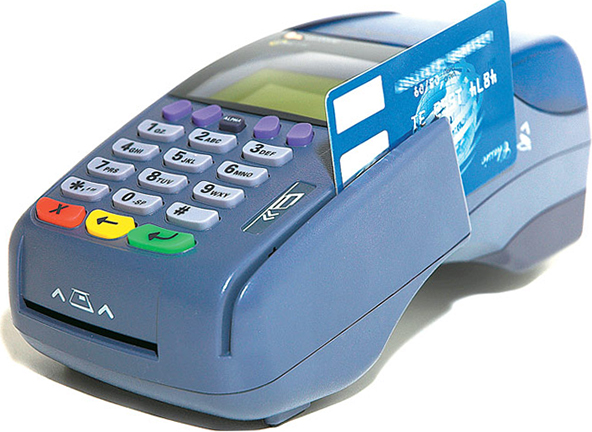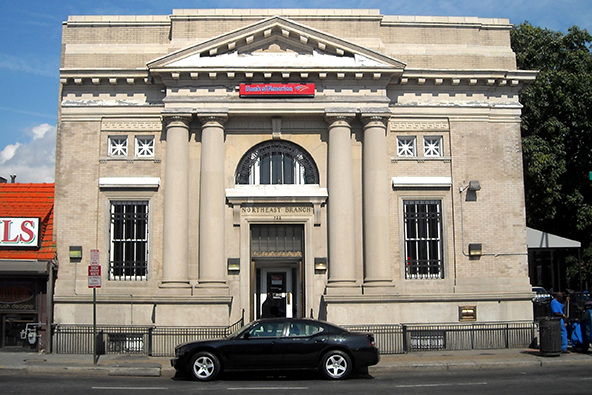Chips, Magnetic Stripes, Grotesque Credit Card Fees and Who Pays for What

Update: As I predicted, Teller has lost this battle. The processor’s managing director explained that he “hadn’t imagined that the fee would be passed on to consumers”. Well, he needs to work on his imagination, but I expect that he will also have plenty of explaining to do to his board of directors.
As a blogger writing on credit card-related topics, I have to admit that the past year has been incredibly good for me. I’ve been supplied with a steady string of reports of real-life events which would, in years past, have stretched my credulity to the snapping point. The vast majority of these stories have been home-grown. The Durbin Amendment has been the most prolific supplier of grist for UniBul’s blog mill by quite a margin, but the farcical developments in the proposed $7.25 billion settlement of the huge antitrust case filed by several million retailers and trade groups against Visa, MasterCard and thirteen of their member banks have proved to be a worthy successor in the past few months. Yet, I still believe that Verizon’s announcement of a $2 “convenience fee” for online credit and debit card payments and its renouncement on the very next day, following a huge, and entirely predictable, consumer outcry, must be the dumbest business move of the past year, in a very strong field.
However, my focus on the U.S., justifiable as it may have been, has prevented me from keeping a close tab on international developments. And whenever I have looked abroad, I’ve usually ventured no farther than the U.K. Well, today I came across a news report from Denmark, of all places, that I just couldn’t let pass. It’s about many of the the usual suspects: credit cards, computer chips, magnetic stripes, fees and, yes, retailer outrage. So let’s see what’s agitating the typically stolid Danes.
“Swipe and Pay” Fee Hits Denmark
The Copenhagen Post informs us that the country’s, and Scandinavia’s, biggest acquirer is introducing a new fee, which “will be imposed when a card’s magnetic strip is used, regardless of the reason”. Now, I should remind you that Denmark, like the rest of Western Europe, has already switched to the EMV (also known as “chip-and-PIN”) technology, which means that the primary method of accepting card payments is through “reading” the card information from the chip that is attached to it. However, EMV-compatible terminals can also accept magnetic-stripe-based cards through what we call in the industry a “fallback procedure”. And now Teller, the acquirer at issue, wants to charge a 7.5 kroner ($1.3) fee for such transactions. That is quite a fee and I am not at all shocked to learn that Danish merchants are all up in arms against it.
Yet, as I said, the vehemence of the opposition has surprised me. Here is what one Danish politician has had to say on the matter, as quoted by The Copenhagen Post:
This creative fee is completely unreasonable and unethically grotesque. And we actually believe that it’s illegal as well… The board’s initial evaluation was also that this is illegal, so we will demand severe repercussions for Teller.
I, for one, believe that anything that is found to be unethically grotesque should automatically be ruled illegal. But let’s take a closer look at what is actually taking place.
Who Pays for What
As is often the case with news reports on developments in the payment card industry, this one presents an inaccurate picture. Here is what we are told:
Customers using a Mastercard, Eurocard or American Express card will have to pay a 7.5 kroner fee every time they use the magnetic strip instead of their chip. Customers have to pay even if the chip terminal at the shop is out of order, and even though many consumers already pay a fee to use their credit cards.
That is incorrect. An acquirer cannot charge any fee to the cardholder, because there is no relationship between these two transaction participants. The only financial institution, which can assess a fee to the cardholder, is the card issuer. The acquirer, for its part, maintains a contractual relationship with, and charges card processing fees to, the merchant. And so, the fee in question will be charged to the merchant, not the customer.
But what makes the whole situation slightly surreal is the fact that charging a premium for not accepting payments in the acquirer’s preferred way is nothing new. In fact, the most-widely used merchant pricing model in the U.S. applies a lower fee to swiped (also called “qualified”) transactions and a higher one (“non-qualified”) to non-swiped ones (where payment information is keyed into the point-of-sale terminal). The reason is that it is cheaper to process swiped transactions than it is to process non-swiped ones. That same rationale is applied by Teller in Denmark: in an EMV environment, it is more expensive to process fallback transactions.
The Takeaway
Now, while the principle of charging higher fees for processing “non-qualified” transactions is not particularly contentious, I believe that it is the make-up of Teller’s fee that has so upset the Danish merchants. While I do accept Teller’s argument that they have to charge such a fee as a way to “encourage” retailers to follow best card acceptance practices, I do agree with the opponents that a flat $1.3 per-transaction surcharge is grossly excessive. Think about it, that’s 13 percent of a $10 transaction’s amount! What Teller should have done instead is what U.S. processors do: add a small percentage fee for non-EMV payments, say 1.5 percent. That would have gone down much better with the merchants (meaning that they would have complained not quite as angrily) and would still have provided them with an extra incentive to stick to EMV. As it is, Teller will very probably lose this fight and it will have no one but itself to blame for it.
Image credit: Payworks.


